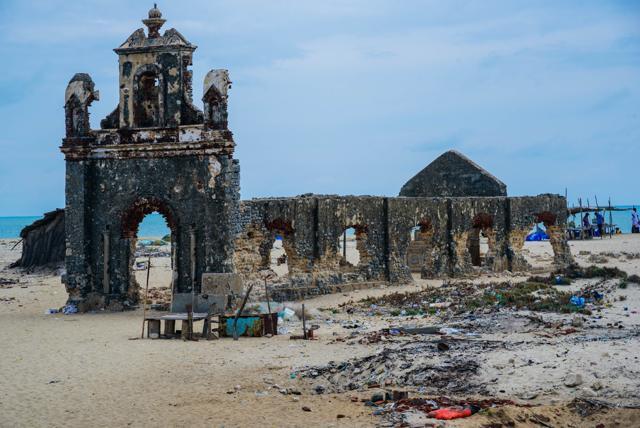In the remote Indian Himalayas, nestled among the snow-capped peaks, lies a chilling mystery that has captivated the imagination of locals and experts alike. It all began in 1965 when a top-secret mission involving international espionage, the CIA, and the Indian government took place on the iconic Nanda Devi mountain. The mission aimed to install a nuclear spying device to monitor China's nuclear activities. However, fate had something else in store, and the device was lost, triggering a decades-long search and raising concerns about potential catastrophic consequences. This article delves into the fascinating story of the lost nuclear device on Nanda Devi, exploring the background, planning, execution, and ongoing quest to locate it.
The backdrop for the mission dates back to 1964 when China conducted its first nuclear test, sending shockwaves through the international community. Alarmed by China's nuclear capabilities, the United States sought ways to monitor their activities. Enter the CIA and their proposal to the Indian government to install a nuclear spying device on Nanda Devi, strategically positioned to observe China. India, still reeling from a recent war defeat against China and concerned about its neighbor's nuclear armament, agreed to the joint mission.
Led by the renowned mountaineer Manmohan Singh Kohli, the expedition team assembled in Alaska for rigorous training before embarking on their mission. The nuclear spying device, weighing approximately 56 kilograms, along with an 8-10 feet antenna, transceivers, and a snap generator, was intended to be installed on the peak of Nanda Devi. The snap generator, half the size of the bomb dropped in Hiroshima, carried seven plutonium devices. The team, comprising mountaineers, porters, sherpas, nuclear experts, intelligence officers, signal experts, and communicators, began their ascent in October 1965.
As the team approached their destination, tragedy struck. When they reached camp IV at 24,000 feet, they encountered a fierce snow blizzard. With their safety at risk, Manmohan Singh Kohli made the difficult decision to secure the device in a cave and tied it with ropes and batons. While the Indian and American intelligence officers approved this arrangement, the mission had to be aborted due to the worsening weather conditions. In 1966, when the team returned to retrieve the device, they discovered it had vanished, swept away by an avalanche triggered by the snow blizzard.
The disappearance of the nuclear device sparked an extensive search operation, but despite multiple efforts, the whereabouts of the device remain unknown. The Indian government closed the Nanda Devi Peak and its surrounding sanctuary for expeditions until 1974 to maintain the secrecy of the operation. The search operations continued sporadically over the years, including the testing of water samples for radioactivity. In 1993, a team reportedly found a round steel case believed to have carried the plutonium devices, suggesting a potential separation from the protective casing.
The lost nuclear device on Nanda Devi poses significant potential risks, particularly if it contaminates the Rishi Ganga River. The device, containing plutonium Pu238, has a half-life of approximately 88 years, meaning it remains highly radioactive for several more decades. The water flowing from the glacier where the device is presumed to have sunk could carry radioactive particles downstream, endangering the surrounding ecosystem and the communities dependent on the river. The recent Chamoli floods, which devastated the region, have raised suspicions among locals regarding the lost nuclear device's involvement.
Efforts to locate the missing nuclear device have been impeded by various challenges. Technological advancements have made it possible to penetrate deep into the ice, but the use of such equipment is costly. The question remains whether the Indian government should invest its own resources or seek assistance from the CIA, which was involved in the original mission. Additionally, the device's burial in separate parts, including the plutonium capsules, transmitter sets, and aerial, makes it challenging to locate without a comprehensive understanding of its exact configuration.
The mysterious case of the lost nuclear device on Nanda Devi has garnered international attention and speculation. Reports suggest that Hollywood producer Scott Rosenfelt is developing a film based on this gripping story, aiming to maintain authenticity and accuracy. The script has been completed, and Greg Mclean is set to direct the project. There are even rumors that renowned actor Ranbir Kapoor may portray Manmohan Singh Kohli in the film. As the cinematic adaptation unfolds, it brings renewed interest to the decades-old stumper.
With the potential risks and environmental concerns associated with the lost nuclear device, there is a growing call for its discovery and resolution. As technology continues to advance, there is hope that new methods and equipment could aid in locating the device buried deep within the Himalayas. Whether it requires the Indian government's investment or cooperation between the nations involved, the need to address this lingering mystery and potential threat remains paramount.
The lost nuclear device on Nanda Devi stands as a testament to the complex web of international espionage, geopolitical tensions, and the enduring mysteries of the Himalayas. While its exact location eludes us, the potential consequences of its presence continue to fuel curiosity and concern. As the search for answers continues, we are reminded of the need for responsible actions and global cooperation to address the legacy of this secret mission and ensure the safety of the people and environment in the region.




No comments:
Post a Comment